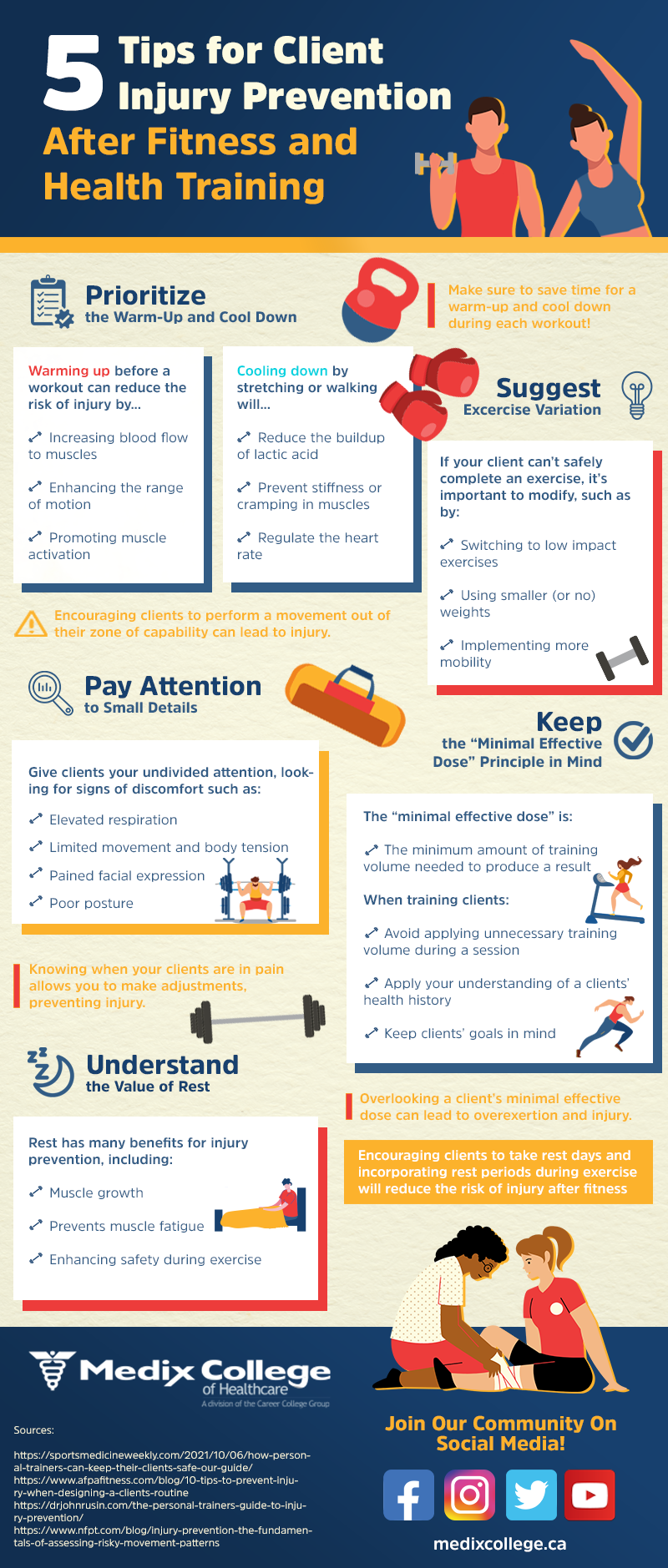If you’re preparing to launch your career after graduating from fitness and health courses, whether as a personal trainer, coach, or instructor, you’ll want to have an injury prevention plan in place. Injuries can occur when we’re exercising, and if a client gets injured under your watch, knowing that you did everything in your power to prevent it will be especially important. While it can be tempting to present your clients with an advanced training program, if they aren’t able to perform the exercises using the proper techniques, their risk of injury can increase.
Implementing injury prevention strategies into training regimens after fitness and health training will not only keep your clients healthy and motivated, but it will also allow them to work more consistently toward their fitness goals.
Below, discover some key tips on how you can devise an injury prevention plan.
[Infographic] 5 Tips for Client Injury Prevention After Fitness and Health Training
1. Prioritize the Warm-Up and Cool Down
Warming up before a workout can reduce the risk of injury by…
- Increasing blood flow to muscles
- Enhancing the range of motion
- Promoting muscle activation
Cooling down by stretching or walking will…
- Reduce the buildup of lactic acid
- Prevent stiffness or cramping in muscles
- Regulate the heart rate
Make sure to save time for a warm-up and cool down during each workout!
2. Suggest Exercise Variations
If your client can’t safely complete an exercise, it’s important to modify, such as by:
- Switching to low impact exercises
- Using smaller (or no) weights
- Implementing more mobility drills
Encouraging clients to perform a movement out of their zone of capability can lead to injury.
3. Pay Attention to Small Details
Give clients your undivided attention, looking for signs of discomfort such as:
- Elevated respiration
- Limited movement and body tension
- Pained facial expression
- Poor posture
Knowing when your clients are in pain allows you to make adjustments, preventing injury.
4. Keep the “Minimal Effective Dose” Principle in Mind
The “minimal effective dose” is:
- The minimum amount of training volume needed to produce a result
When training clients:
- Avoid applying unnecessary training volume during a session
- Apply your understanding of a clients’ health history
- Keep clients’ goals in mind
Overlooking a client’s minimal effective dose can lead to overexertion and injury.
5. Understand the Value of Rest
Rest has many benefits for injury prevention, including:
- Muscle growth
- Prevents muscle fatigue
- Enhancing safety during exercise
Encouraging clients to take rest days and incorporating rest periods during exercise will reduce the risk of injury after fitness and health training.
Sources:
https://www.afpafitness.com/blog/10-tips-to-prevent-injury-when-designing-a-clients-routine
https://drjohnrusin.com/the-personal-trainers-guide-to-injury-prevention/
https://www.nfpt.com/blog/injury-prevention-the-fundamentals-of-assessing-risky-movement-patterns




